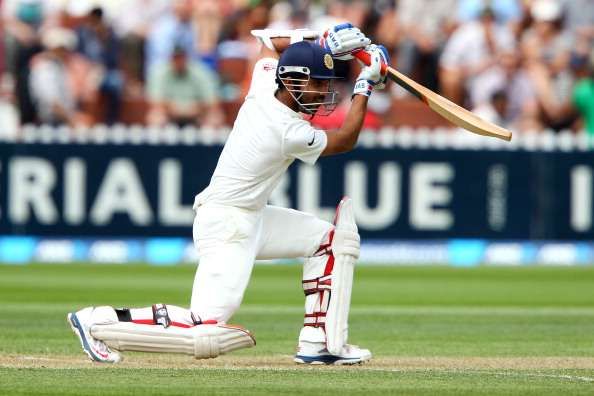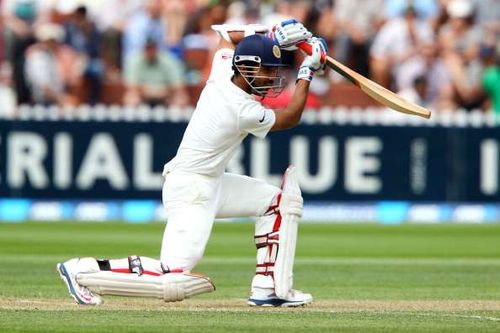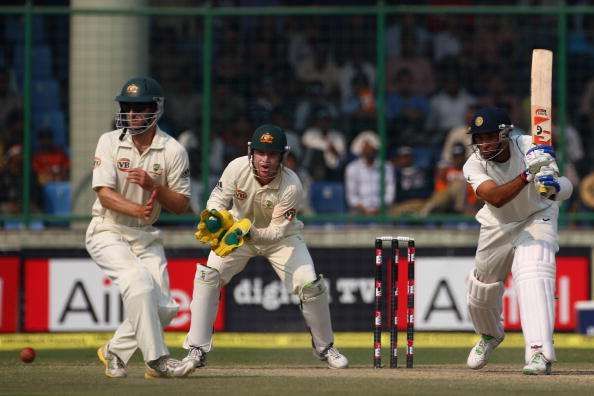
A cure to India's batting woes - Percentage cricket

The batsman skips down the track and pushes the ball to long on for a single. At first look, there is nothing much to write home about in that particular passage of play. Play that over a session of Test cricket and you are nearing a half century. The name of the game - percentage cricket.
Before we get to explore more about ‘percentage cricket’ let me elaborate the circumstances which got me thinking about it. In the ongoing Test series between India and Australia, where pre-series predictions have put Nostradamus to shame, we have witnessed the much touted Indian batting line up in shambles more often than not. So much so that Harbhajan Singh is having to do extra duty on Twitter to defend the pride of the nation.
The platform was set up perfectly - India on a high with a string of wins, a deflated Aussies team on the back of a whitewash at the hands of the Lankans the last time they visited the subcontinent, spinning tracks and batsman raring to go. Yet, India have been outplayed at their own game. India haven’t been able to repeat the considerable success they had against their previous visitors.
Also Read: 5 reasons why the Australian win actually helped India
This is where percentage cricket comes into play. For every ball that is delivered, a batsman has a multitude of options depending on his skill level. And each option comes with an associated risk. To illustrate, for a seaming ball pitching on middle and leg, a batsman is better off pushing it to mid-on rather than a hoick over mid-wicket. The percentage of risk associated with the latter is obviously high.
To be consistently successful at top flight cricket a batsman needs to have an inherent understanding of his game and hitherto the risks associated with it. An immediate line of thought is to rule out the flamboyant players as high-risk cricketers. A Laxman driving against Warne’s spin or Lara toying with Murali. But one needs to understand that risk is highly subjective to the skill level of the batsman at play. Both Laxman and Lara had games that can be replicated by few. Those are not models one can learn from.

Let us take the example of Tendulkar. Not the younger, adventurous version but the more tranquil version which took shape in the mid-2000s. His renaissance was marked by his adoption to percentage cricket. Remember his epic double century at Sydney, it is common knowledge that he cut out strokes outside the off stump and thus limiting risk.
One needs an innate understanding of his game to know what his most effective shot to counter a ball at play. A shot which minimises risk and lets you score runs.
Indian batting line-ups of the past were masters of this game; a reason why Nathan Lyon wasn't so effective last time around. With due respect to Lyon, greater spinners in Warne and Murali have suffered at the hand of India’s batters in India. A dab to point, a push down to long on, a paddle sweep bisecting the keeper and fine leg or be it a wrist flick to deep mid-wicket.
The Indian batsmen had the game to keep the scoreboard ticking and hence continually upsetting the rhythm of a bowler. A bowler’s dream in Test cricket is to deliver an over to one particular batsman so as to work him out and settle into a rhythm. A low percentage game enables a batsman to simply take a single and upset that very same plan of the bowler.
Also Read: 5 dangers for India in the Border-Gavaskar Series
Unfortunately, the current Indian batting line up is too much attuned to flamboyance. A game which will serve them well as long as a bad ball is at play. As the frequency of hittable deliveries decreases, the risk in scoring runs increases.
In every series till now, India have had hittable deliveries served at a relishable frequency. In the current series, Lyon and O’Keefe have kept tighter lines hence choking the opposition batsmen.
The only way they have tried to break cage has been to resort to flamboyance which has lead to their downfall. With the series already in peril, it is high time that the batsmen forgo flamboyance for the sake of percentage cricket. Develop a game plan where they can look more secure at the crease and not a pin waiting to be rolled over by the ball.